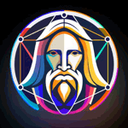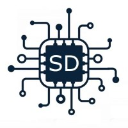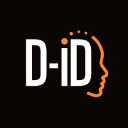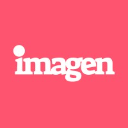AI Image Generator software: purchase guide
AI Image Generator Software in 2025: Your Creative Accelerator in the Age of Instant Content
What Is AI Image Generator Software
AI image generator software allows you to create visuals using artificial intelligence by simply describing what you want to see. Whether it’s an ad banner, a product mockup, or a unique digital artwork, these platforms use advanced models—like diffusion networks or GANs—to turn text prompts into finished images in seconds.
But in 2025, it's not just about generating images. These tools are evolving into full creative platforms, offering advanced customization, batch creation, brand-safe outputs, and integrations with your design stack. They're not just replacing tedious creative steps—they’re empowering non-designers and professionals alike to launch content faster, iterate more efficiently, and free up creative bandwidth for high-level work.
Why It Matters to Your Creative Team
Break the bottleneck between idea and execution
You’ve got a campaign idea at 9 AM. By 9:05, you already have six visual options to test. That’s the power of AI image generation—it collapses the gap between concept and content. No more waiting on designers, hunting for stock photos, or compromising on creative ambition because of time.
This matters because speed isn’t just convenient—it’s a competitive edge. In saturated markets, the faster your team can test, iterate, and launch, the better your results.
Give non-designers real creative autonomy
Marketing, sales, and product teams often rely on overburdened designers to get even the smallest visual asset. AI image software gives them the power to generate on-brand, high-quality graphics independently—within guardrails you control. This frees up designers to focus on high-impact creative strategy instead of resizing banner ads.
Multiply your content velocity without bloating headcount
From A/B ad variations to region-specific imagery, AI-generated visuals enable you to scale content production without scaling team size. Instead of two designers producing ten graphics a week, you could empower your entire marketing team to create 100—with the same visual consistency.
Why It Matters for Your Brand
Visual consistency at scale
Brand guidelines matter—but they’re hard to enforce when everyone’s designing ad hoc. With AI image generators that allow custom styles, templates, and color profiles, you can ensure visual identity remains intact even when assets are produced outside the design team.
Rapid testing, better performance
Want to know which visual converts best? AI lets you generate ten versions in a fraction of the time and cost it used to take to produce one. That means more experiments, better optimization, and ultimately, better ROI.
Accessibility meets excellence
You no longer need a creative agency or an in-house team to compete visually. AI image software democratizes quality design, giving small teams the tools to look premium, polished, and professional—on a budget.
How to Choose the Right AI Image Generator
1. Output quality over novelty
It’s easy to be dazzled by surreal or artistic images, but ask yourself: can the tool generate visuals that are actually usable in your day-to-day marketing and product workflows?
Focus on tools that:
Understand context in prompts (not just keywords)
Produce images aligned with your brand tone (realistic, playful, modern, etc.)
Maintain consistency across multiple generations (no weird anomalies in faces or products)
2. Look for enterprise-ready customization
As your needs grow, so will your expectations. Choose software that allows you to:
Upload brand kits (colors, fonts, logos)
Define style templates for different channels (social, email, ads)
Lock certain visual rules so non-designers stay on brand
The ability to scale without sacrificing visual control is what separates consumer-grade tools from business-ready ones.
3. Prioritize workflow integration
The best AI image generator doesn’t operate in a vacuum—it becomes part of your content workflow. Whether you work in Figma, Canva, HubSpot, or Adobe, make sure the platform integrates with your tools or at least exports in the right formats (SVG, PNG, layered PSD).
Also consider:
4. Evaluate ethical and legal safeguards
AI-generated visuals come with legal and brand safety concerns. Before choosing a platform, make sure it:
Provides clear commercial usage rights
Doesn’t train on copyrighted materials without consent
Allows you to trace and manage the origin of your visuals (especially important for client-facing or regulated industries)
How to Successfully Implement AI Image Generation in Your Team
Start with a defined use case, not just curiosity
Identify one area where your team is currently bottlenecked—social content, blog illustrations, internal mockups—and implement AI there first. This creates visible ROI and builds internal trust.
Develop brand presets early
Work with your design team to set up custom templates or visual guidelines inside the tool. Lock in brand colors, preferred styles, and image ratios to ensure consistency as usage scales.
Train non-designers to write good prompts
Writing a good AI prompt is a creative skill. Run internal workshops or create prompt templates tailored to your brand tone (e.g., “minimalist flat style product image on white background”).
Track usage, output quality, and success metrics
Monitor how much time is saved, how often outputs are actually used, and which visuals perform best. Refine your workflows based on what works—and what doesn’t.
Top AI Image Generator Software in 2025
| Software |
Key Features |
Pricing |
Trial & Demo |
Best For |
| Rupert AI |
Rapid image generation, prompt editing, style controls, brand kits |
From $10.00/month |
✅ Free version
✅ Free trial
✅ Free demo |
Teams that need on-brand visuals fast for marketing or sales |
| Playground |
Real-time editing, prompt customization, multi-style rendering |
Pricing on request |
✅ Free version
✅ Free trial
✅ Free demo |
Creative teams that want full control over output aesthetics |
| Hotpot |
Simple UI, pre-built templates, AI filters and enhancement tools |
Pricing on request |
✅ Free version
✅ Free trial
✅ Free demo |
Entrepreneurs or marketers with limited design experience |
| AI Image Enlarger |
Image upscaling, resolution enhancement, noise reduction |
Pricing on request |
✅ Free version
✅ Free trial
✅ Free demo |
Teams who need to repurpose or sharpen existing low-res assets |
| Adobe Firefly |
Style transfer, deep Adobe CC integration, real-time collaboration |
Pricing on request |
✅ Free version
✅ Free trial
✅ Free demo |
Design departments with Adobe-centric workflows seeking AI acceleration |
AI Image Generation Trends in 2025
AI design goes from visual aid to brand engine
Generative tools are no longer just idea starters—they're embedded into content production pipelines. Brands are now training models on proprietary brand assets to ensure every AI-generated image reflects their identity.
What to do: Build a branded AI model or create templates inside your platform of choice that replicate your unique visual language.
Hybrid workflows become standard
Instead of replacing designers, AI tools now support iterative design. A bot creates 20 concepts, the designer picks and polishes one. This model reduces creative fatigue and speeds up delivery without compromising quality.
What to do: Define the human/AI handoff in your workflow, and standardize how AI outputs get refined.
Legal clarity is no longer optional
As governments and platforms introduce new regulation around AI-generated media, companies are demanding clarity on image sourcing and licensing.
What to do: Partner with platforms that offer license clarity, opt-out systems for artists, and a commitment to ethical training practices.
Conclusion
In a world where content is constant and attention is scarce, AI image generator software is a creative superpower. It compresses timelines, amplifies output, and removes creative friction—without removing the human touch.
Choose your tool wisely, implement it with a purpose, and empower your team to create like never before. With the right strategy, AI won’t replace creativity—it will scale it.
Because visual storytelling shouldn’t be limited by time or team size.
Now, it doesn’t have to be.




